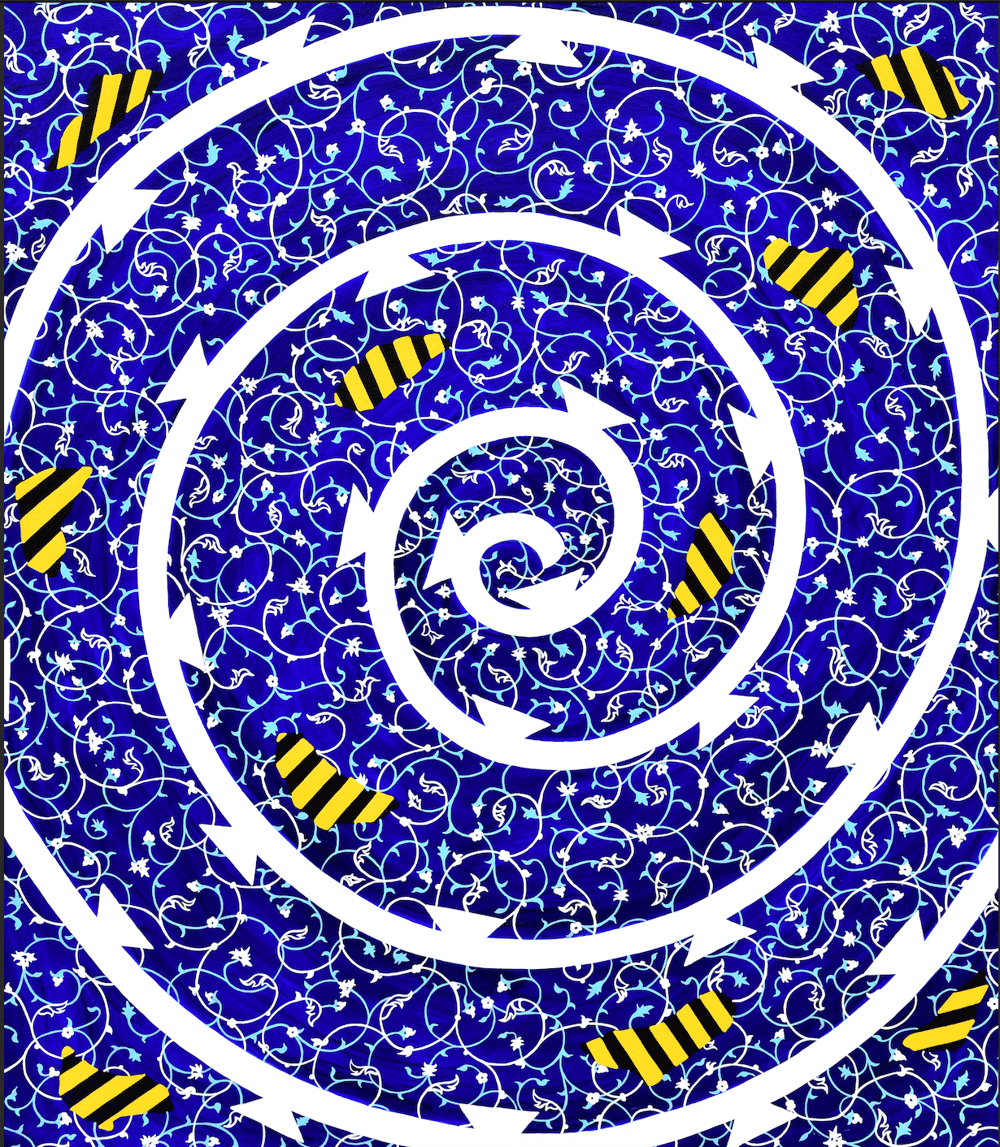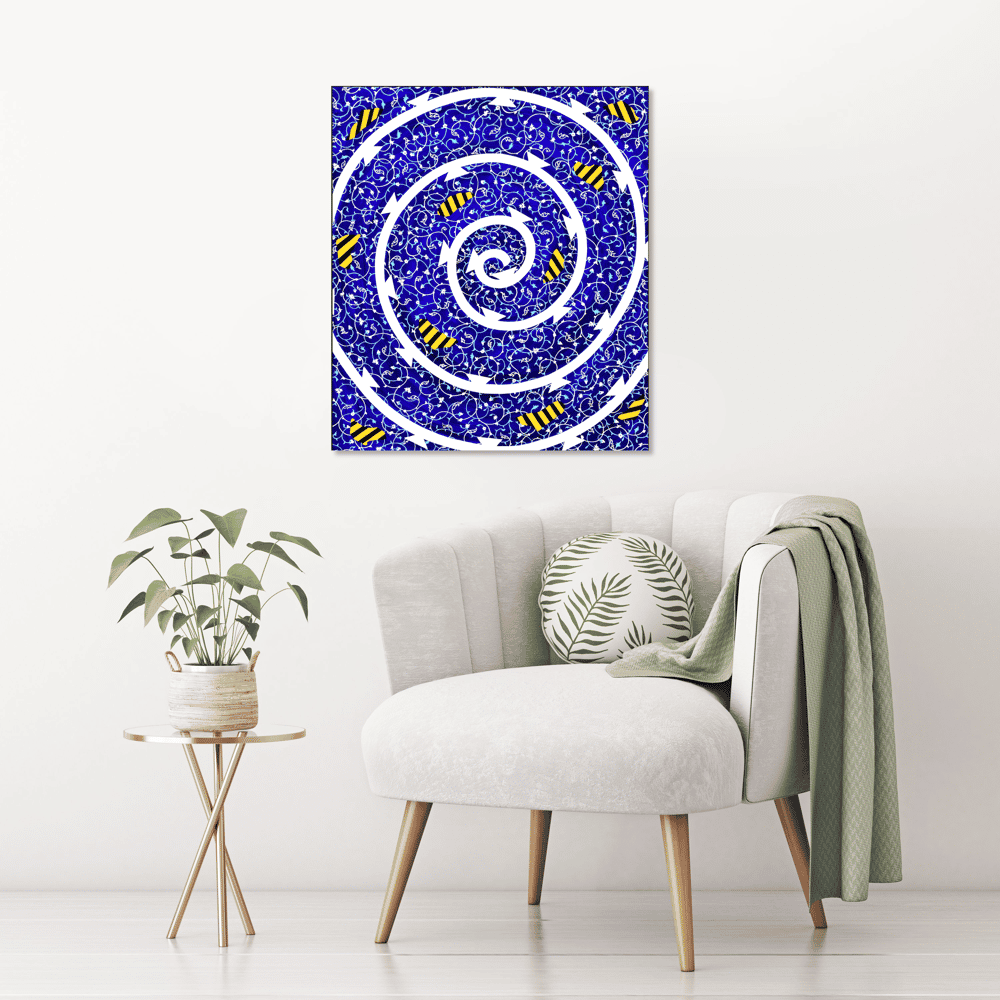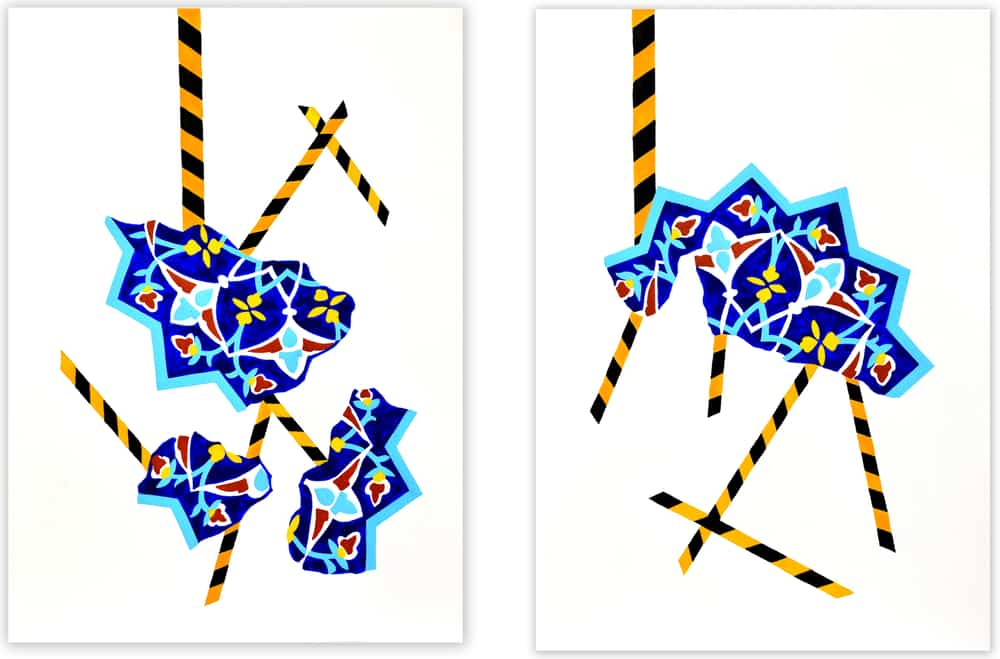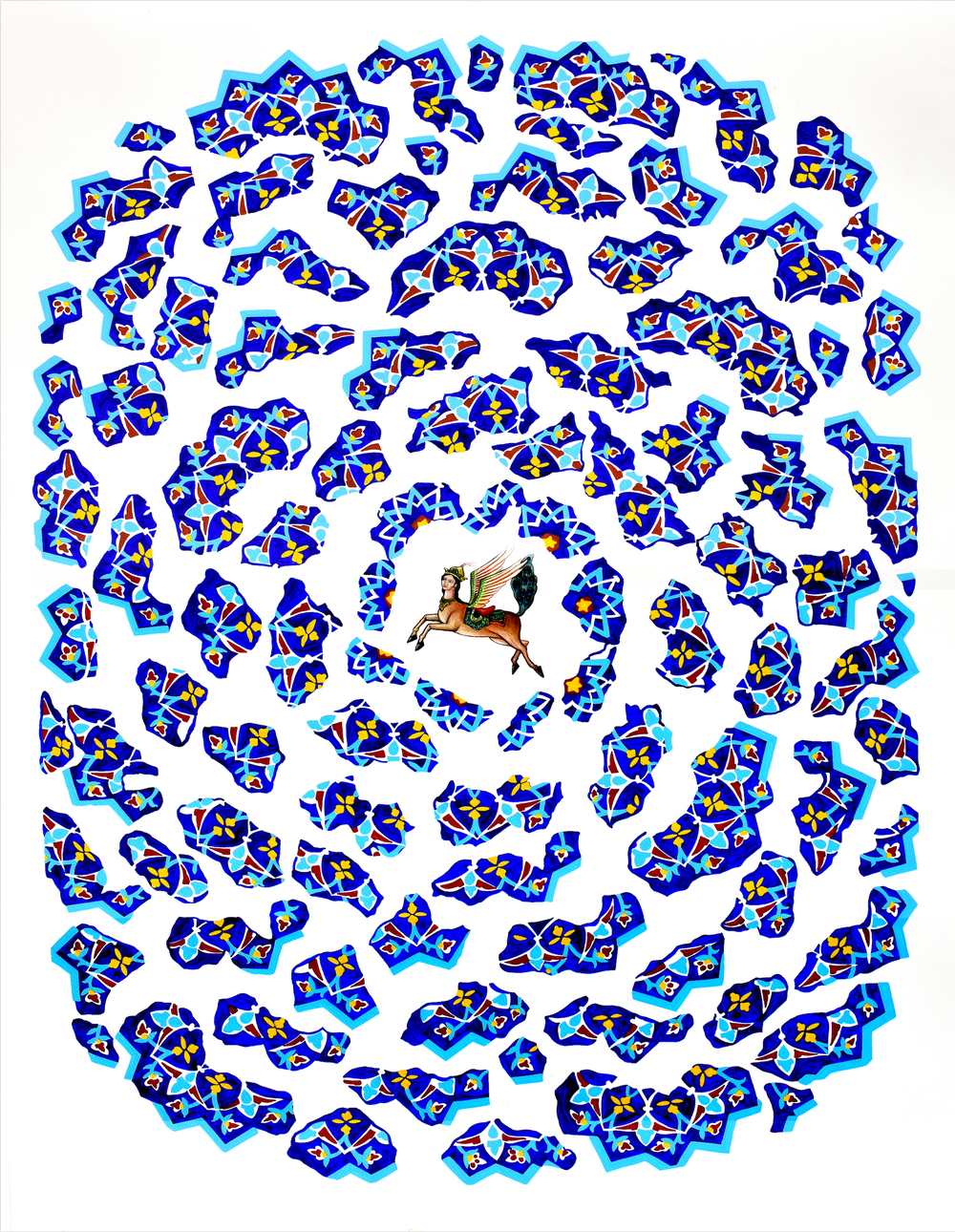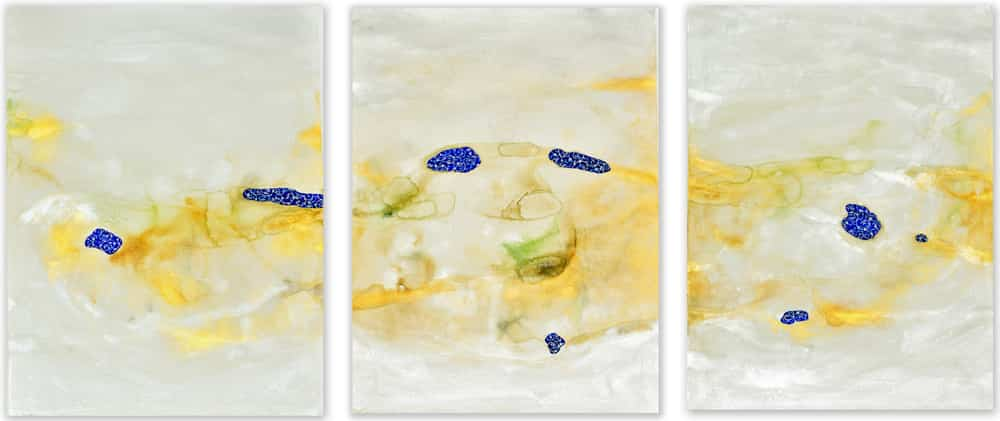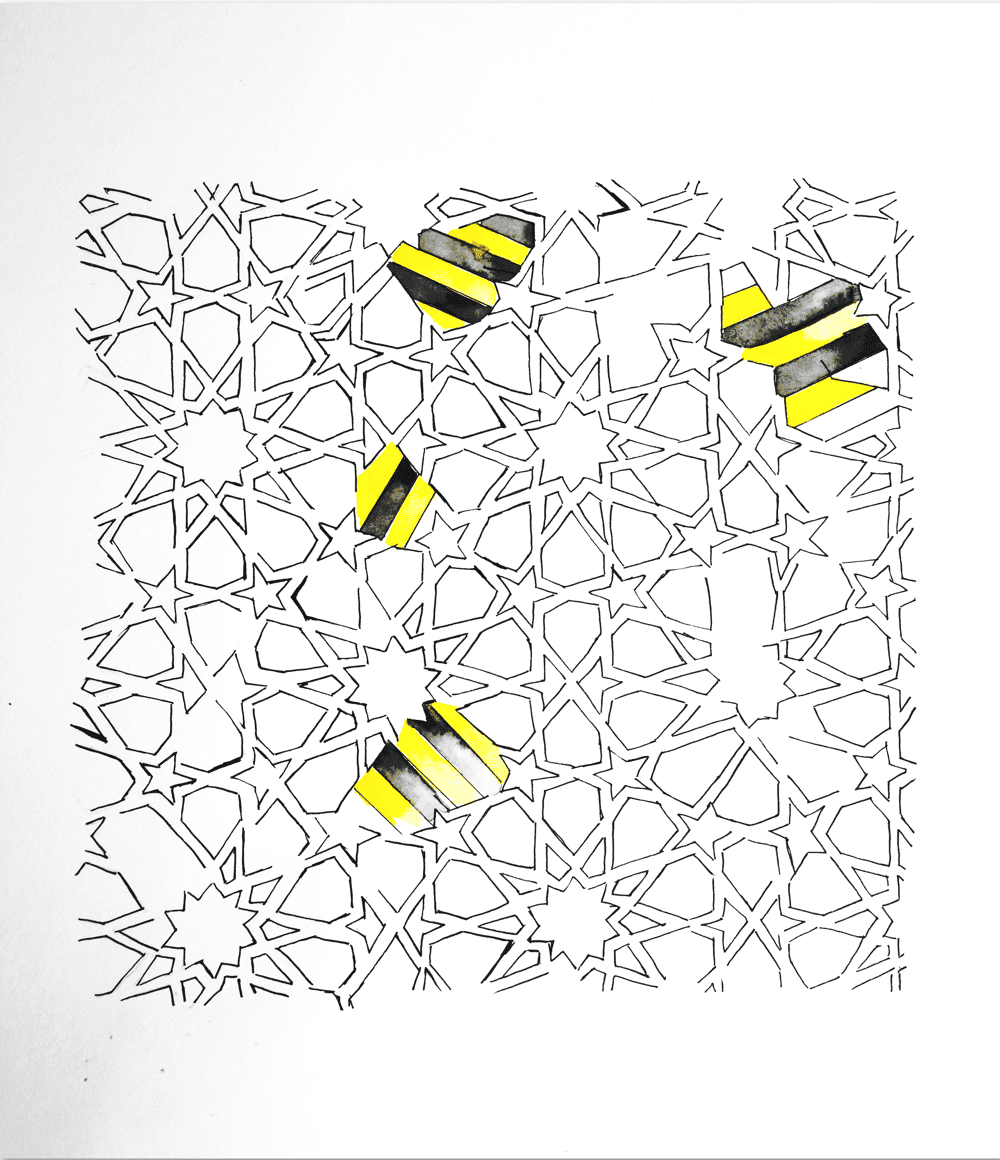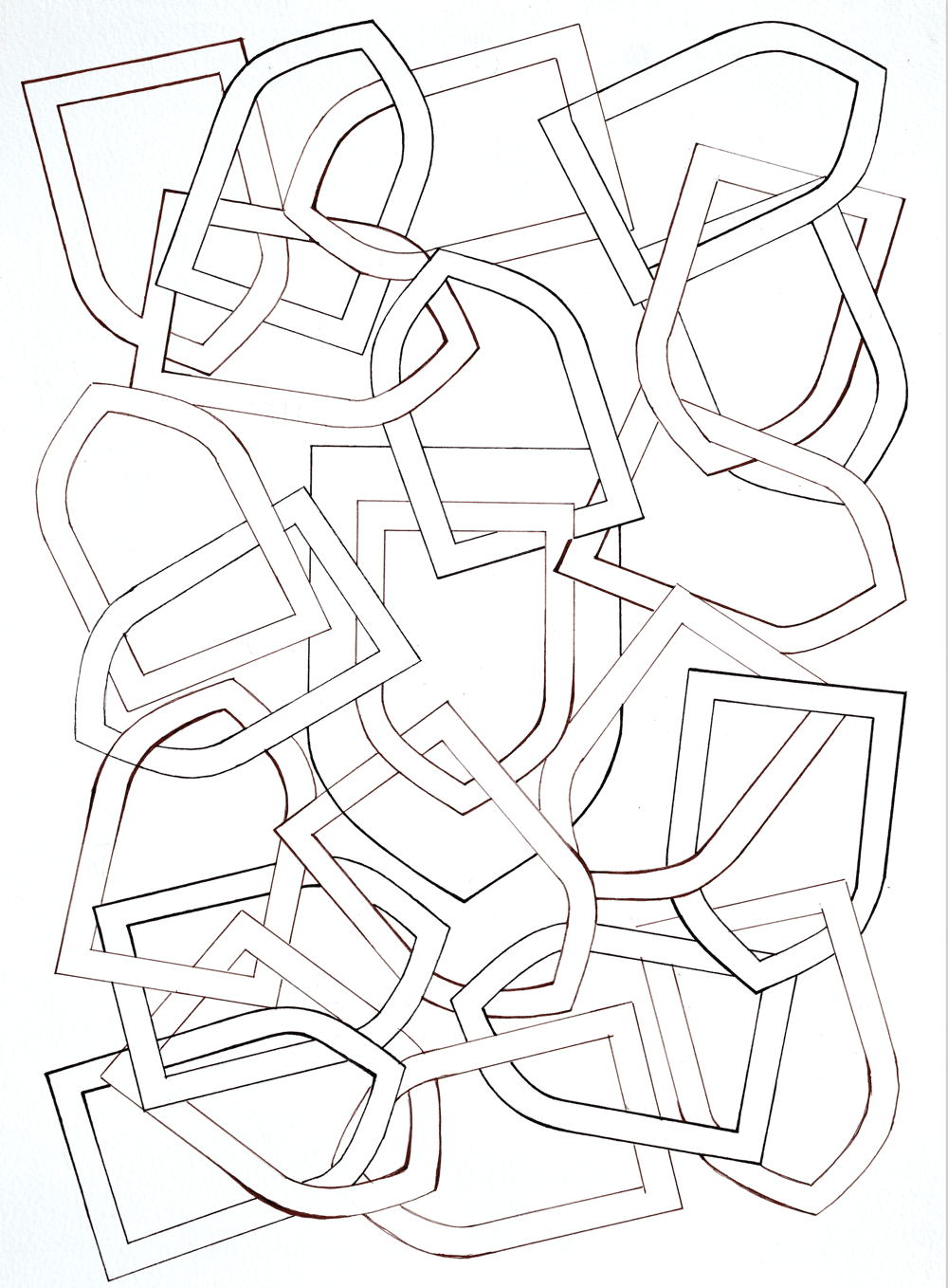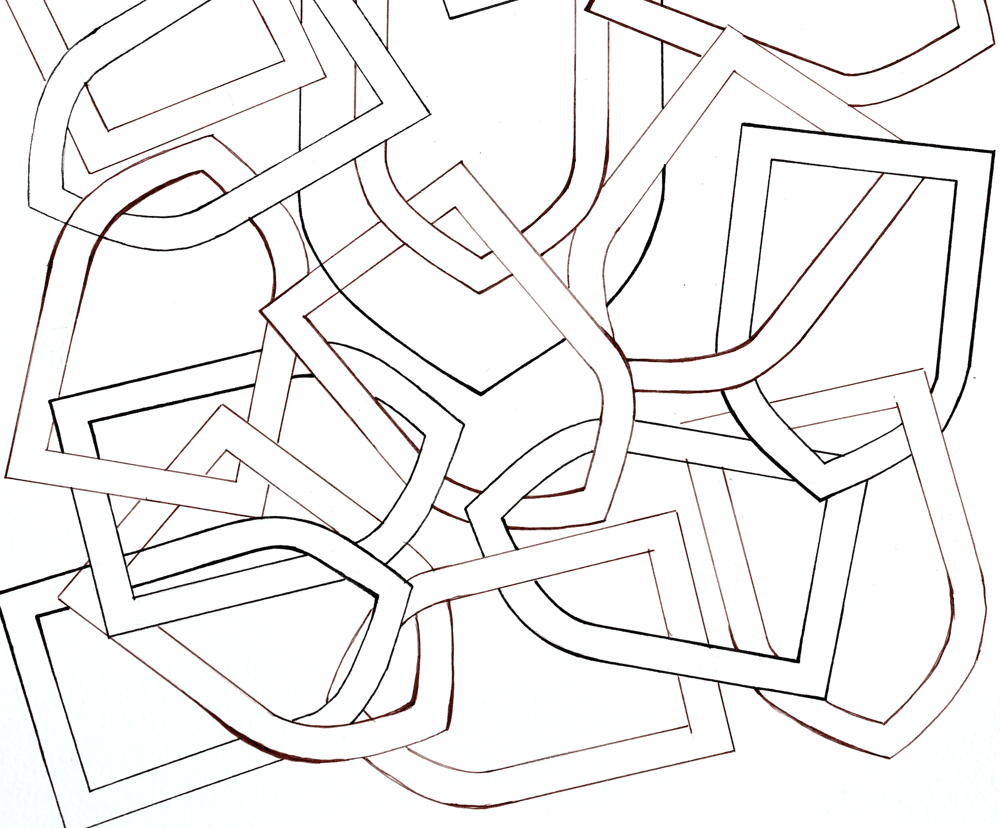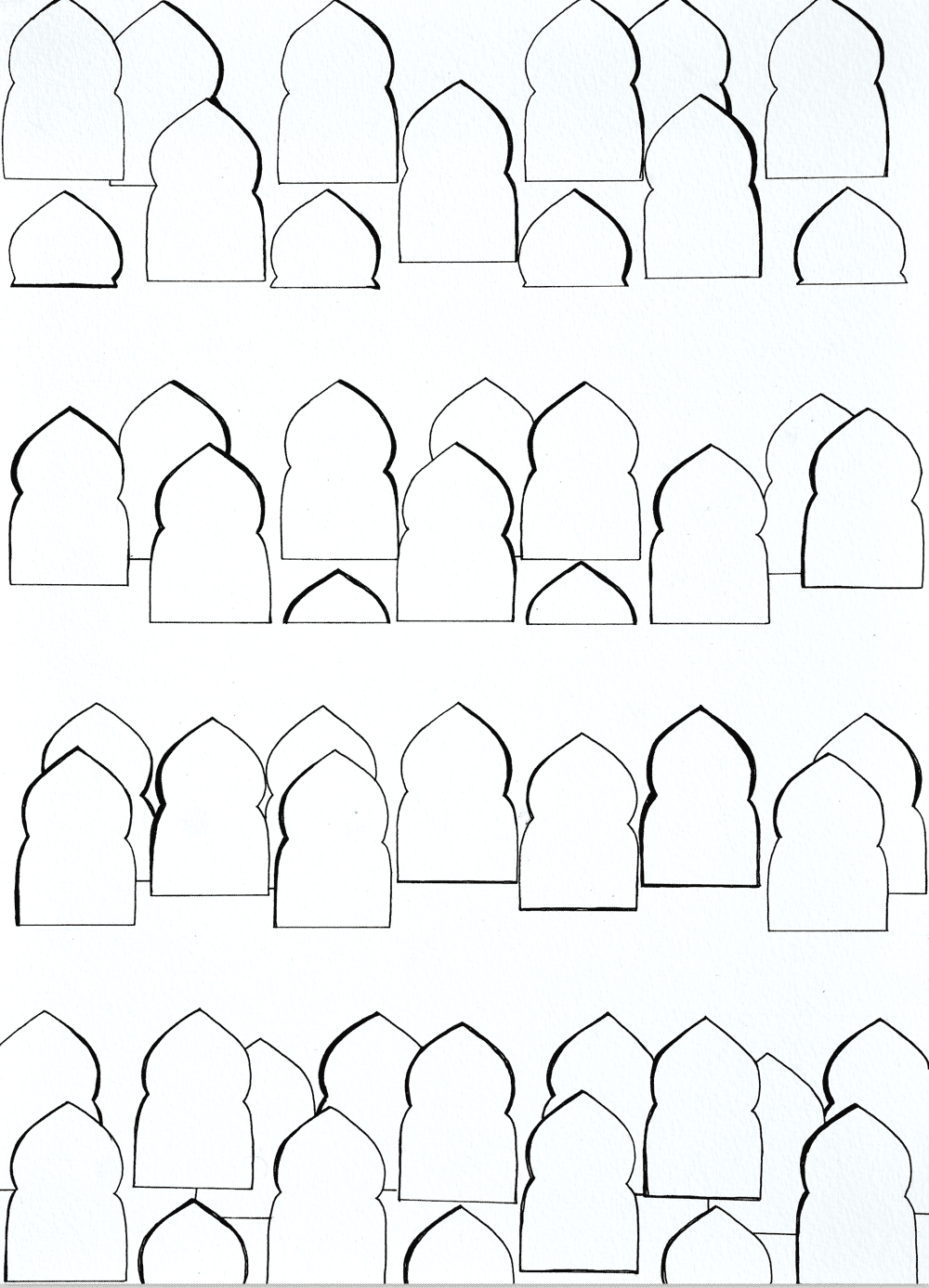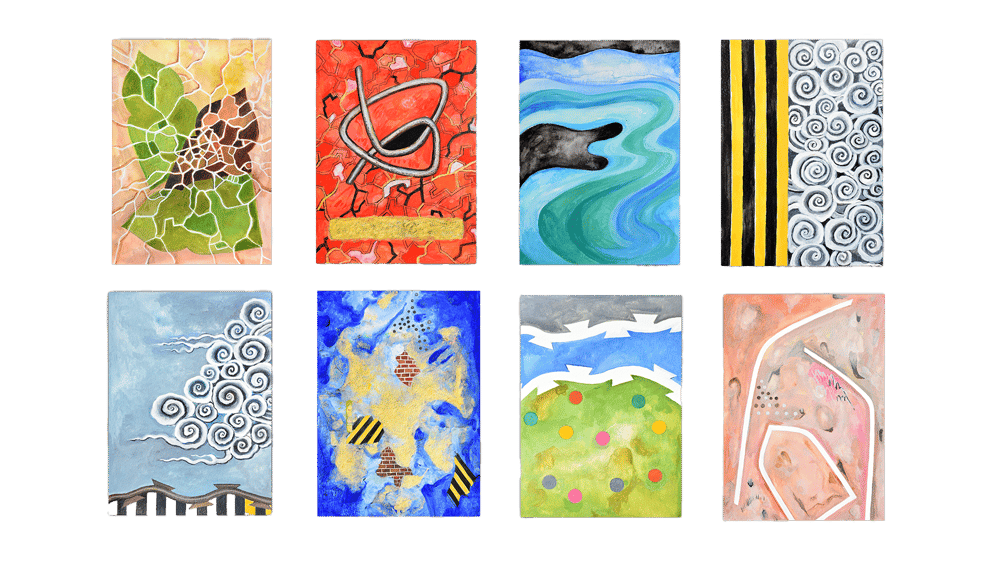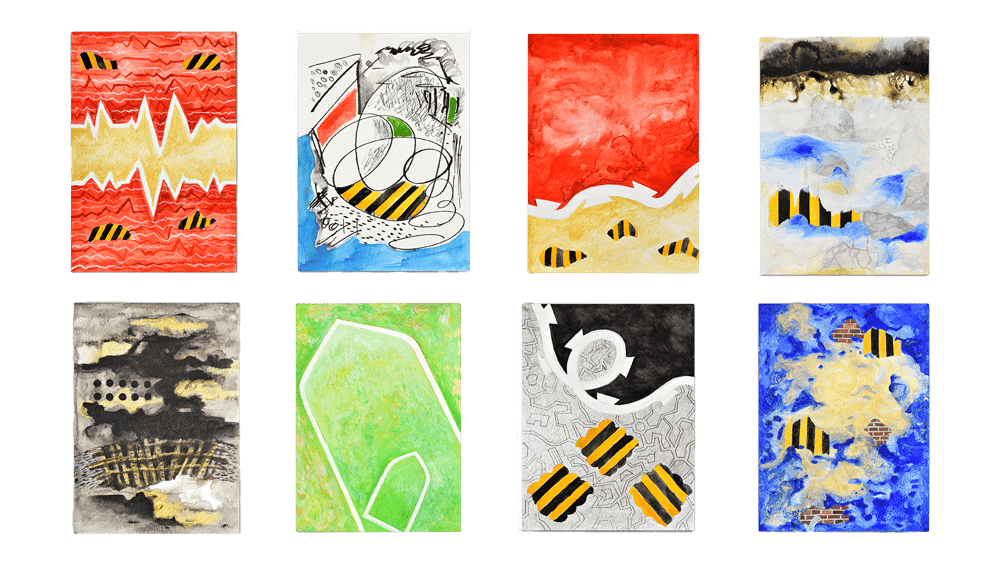Nur Mahammad 
Hallucinating Democracy, 2022
Medium
Acrylic on canvas
Dimensions
60.9 x 50.8 cm | 24 x 20 in
About the Artist
Nur Mahammad
Delhi-based painter Nur Mahammad (b. 1983) makes bold artistic statements addressing the discriminatory forces of xenophobia and Islamophobia in contemporary society. As Mahammad explains, “The current day rulers use fear as a mechanism of socio-political control. Some of my works are based on xenophobia, Islamophobia, the trauma of homelessness, exodus, etc. Each object I use has historical importance: the throne, war tanks, chains: they all reflect the history of power and control.” He is interested in the mechanisms of fear that surround specific communities and how design and art can contribute to conversations around resistance and resilience. His visual vocabulary thus incorporates Mughal motifs, images from press reportage, and everyday items to highlight issues of segregation and, also castigate the exclusion of minority communities by political and social mainstream systems.

